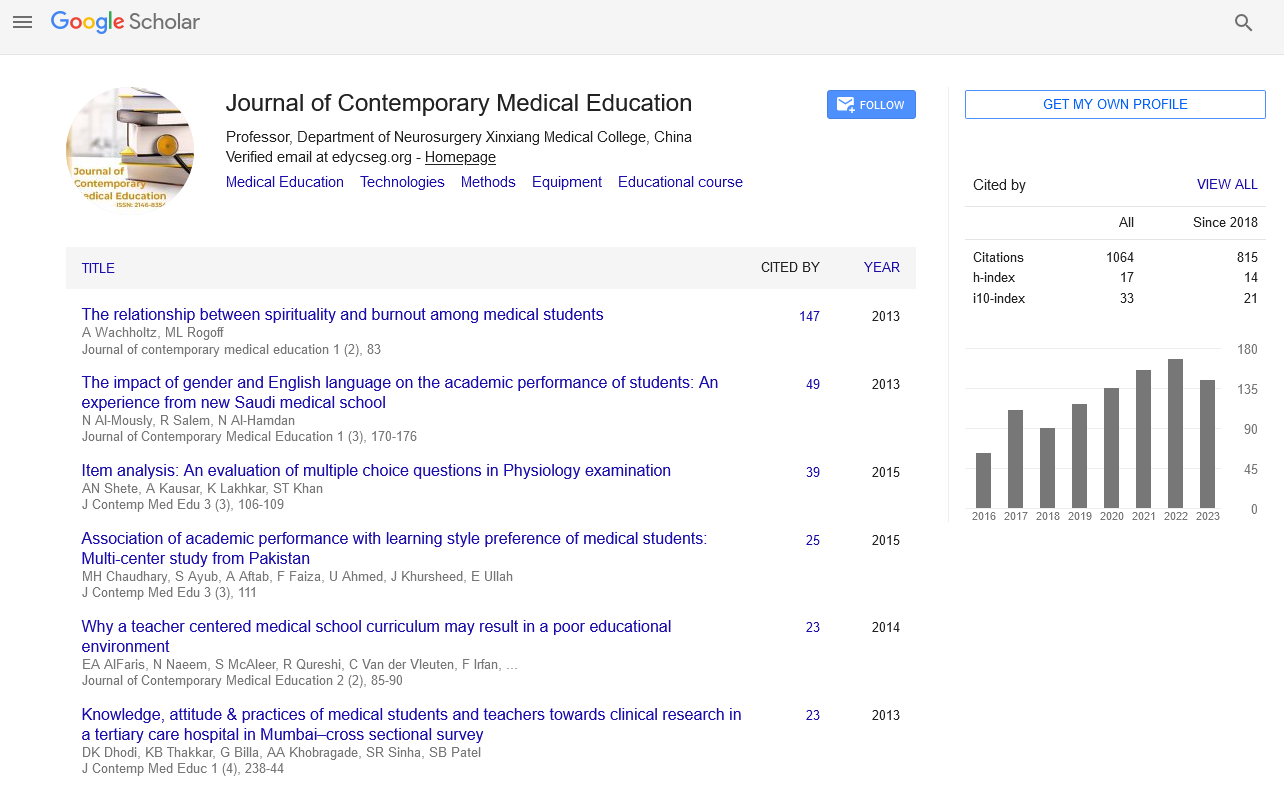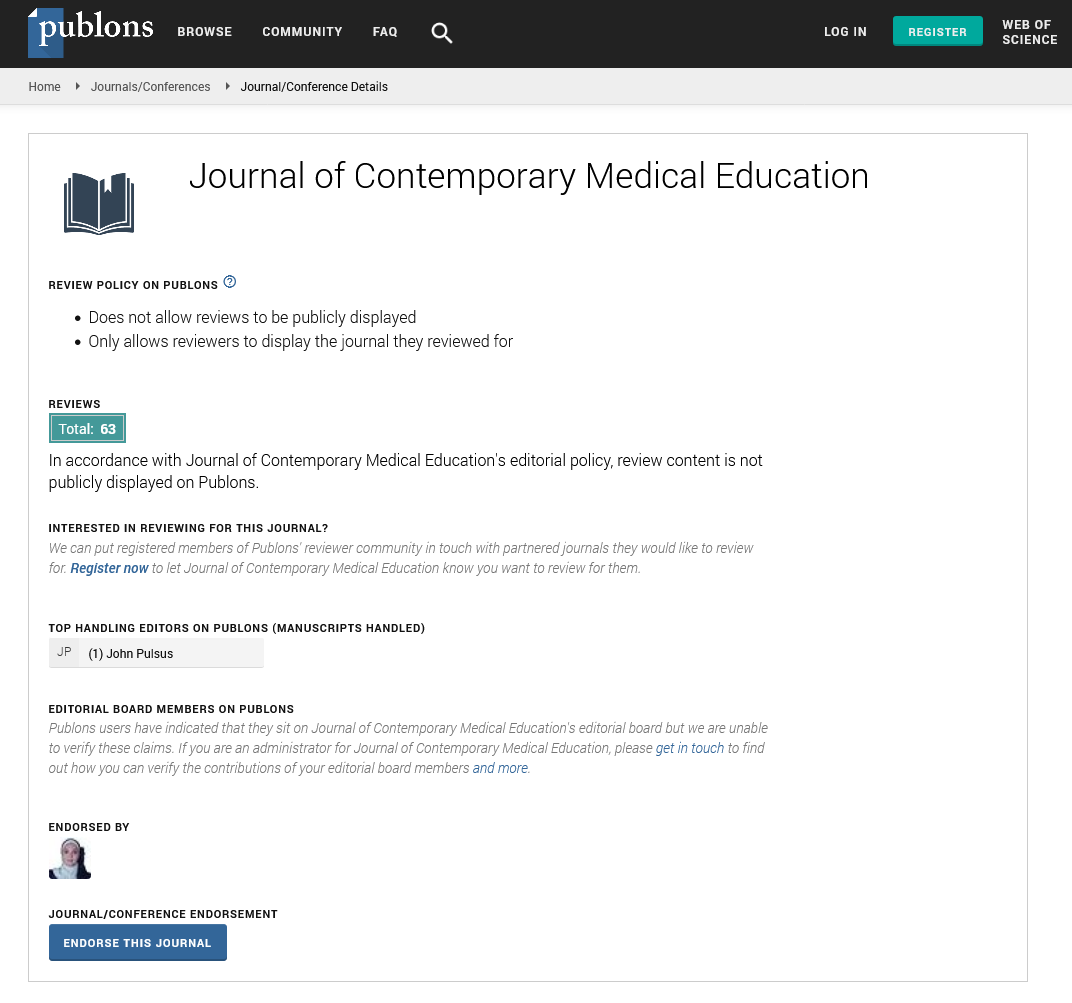Commentary - Journal of Contemporary Medical Education (2022)
Human Brain: Facts, Functions & Anatomy
Doeschka Ferro*Doeschka Ferro, Department of Neurology, University Medical Center Utrecht, Utrecht, Netherlands, Email: ferrochka@gmail.com
Received: 03-Mar-2022, Manuscript No. JCMEDU-22-56376; Editor assigned: 05-Mar-2022, Pre QC No. JCMEDU-22-56376 (PQ); Reviewed: 19-Mar-2022, QC No. JCMEDU-22-56376; Revised: 24-Mar-2022, Manuscript No. JCMEDU-22-56376 (R); Published: 31-Mar-2022
Description
The brain is a complex organ that controls thoughts, memory, emotion, touch, motor chops, vision, breathing, temperature, hunger and every process that regulates our body. Together, the brain and spinal cord that extends from it make up the central nervous system (CNS). The human brain serves as the nerve system’s command centre. It takes in information from the body’s sensory organs and sends it to the muscles. The human brain has the same basic structure as other animal brains, but it is larger than the brains of many other mammals, such as dolphins, whales, and elephants, in relation to body size. The human brain weighs roughly 3 pounds (1.4 kilogrammes) and accounts for about 2% of a person’s total body weight. Male brains are around 10% larger than female brains on average. The average male brain is about 78 cubic inches (1,274 cubic centimetres) in volume, while the average female brain is 69 cubic inches in volume (1,131 cubic cm). The cerebrum, which is located in the front section of the skull and accounts up 85 percent of the brain’s weight, is the most important part of the brain. About 86 billion nerve cells (neurons) make up the grey matter in the human brain. Non-neuronal cells, such as oligodendrocytes, insulate neuronal axons with a myelin sheath; make up nearly the same percentage of the brain. Because axons (thin strands via which electrical impulses are passed between neurons) have a white appearance, the brain’s “white matter” is named after them. The brain is incapable of multitasking. Instead, it alternates between tasks, increasing errors and lengthening the time it takes to complete tasks. During the first year of life, the human brain triples in size and matures around the age of 25. Humans use their entire brain, not just 10% of it, all of the time. The human brain has the ability to generate 23 watts of electrical power, which is enough to operate a small lightbulb.
Right brain-left brain
The mind is divided into two halves the right and left components. They’re joined by a pack of filaments called the corpus callosum that transmits dispatches from one side to the other. Each semicircle controls the contrary side of the body. However, your left arm or leg may be weak or paralyzed, If a stroke occurs on the right side of the brain. Not all functions of the components are participated. In general, the left semicircle controls speech, comprehension, arithmetic, and writing. The right semicircle controls creativity, spatial capability, cultural, and musical chops. The left semicircle is dominant in hand use and language in about 92 percent of people.
Anatomy of human brain
The largest part of the human brain is the mind, which is divided into two hemispheres. Each semicircle consists of four lobes the anterior, parietal, temporal and occipital. The rippled face of the mind is called the cortex. Under the mind lies the brainstem, and behind that sits the cerebellum.
The anterior lobe is important for cognitive functions, similar as study and planning ahead, and for the control of voluntary movement. The temporal lobe generates recollections and feelings. The parietal lobe integrates input from different senses and is important for spatial exposure and navigation. Visual processing takes place in the occipital lobe, near the reverse of the cranium. The brainstem connects to the spinal cord and consists of the medulla oblongata, pons and midbrain. The primary functions of the brainstem include relaying information between the brain and the body; supplying utmost of the cranial jitters to the face and head; and performing critical functions in controlling the heart, breathing and situations of knowledge (it’s involved in controlling wake and sleep cycles). Between the mind and brainstem lie the thalamus and hypothalamus. The thalamus relays sensitive and motor signals to the cortex. Except for olfaction (sense of smell), every sensitive system sends information through the thalamus to the cortex. The hypothalamus connects the nervous system to the endocrine system, where hormones are produced via the pituitary gland. The cerebellum lies beneath the mind and has important functions in motor control. It plays a part in collaboration and balance and may also have some cognitive functions.
The brain also has four connected depressions, called ventricles, which produce what is called Cerebrospinal Fluid (CSF). This fluid circulates around the brain and spinal cord, softening it from injury, and is ultimately absorbed into the bloodstream. In addition to softening the central nervous system, CSF clears waste from the brain. In what is called the glymphatic system, waste products from the interstitial fluid girding brain cells move into the CSF and down from the brain. Studies suggest this waste concurrence process substantially happens during sleep.
The brain is composed of the mind, cerebellum, and brainstem. Cerebrum is the largest part of the brain and is composed of right and left components. It performs advanced functions like interpreting touch, vision and hail, as well as speech, logic, feelings, literacy, and fine control of movement. Cerebellum is located under the mind. Its function is to coordinate muscle movements, maintain posture, and balance. Brainstem acts as a relay center connecting the mind and cerebellum to the spinal cord. It performs numerous automatic functions similar as breathing, heart rate, body temperature, wake and sleep cycles, digestion, sneezing, coughing, puking and swallowing.
Copyright: © 2022 The Authors. This is an open access article under the terms of the Creative Commons Attribution NonCommercial ShareAlike 4.0 (https://creativecommons.org/licenses/by-nc-sa/4.0/). This is an open access article distributed under the terms of the Creative Commons Attribution License, which permits unrestricted use, distribution, and reproduction in any medium, provided the original work is properly cited.







